How to Plan Your Colored Pencil Art
Have you ever wanted to start a piece of coloured pencil art but didn't know where to begin?
It can quickly drain your creative energy and enthusiasm.
The good news is, by following a few simple preparatory steps before you start, you can set yourself up for success and reignite that creative spark.
This guide will navigate you through these essential steps, ensuring you have the confidence and knowledge to make smart choices from the beginning.
Let’s get started, shall we?
Choosing a good photo reference
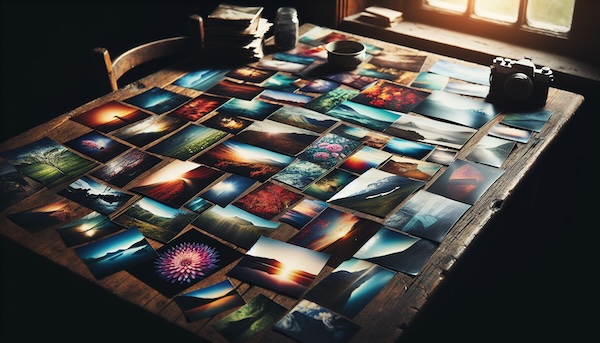 How do you choose which photo to base your drawing on?
How do you choose which photo to base your drawing on?Have you ever spent hours drawing, only to realize something is off? Maybe the proportions are incorrect, or you've missed a crucial detail that disrupts the entire picture. This often stems from over-reliance on imagination instead of using a photo reference.
Choosing the perfect photo reference is crucial. However, you might spend hours deciding whether a side view or a front view works best when what you really want to do is draw!
This process is especially challenging if you're not a professional photographer, leading you to reject many photos because they aren't quite perfect.
Let me help you choose the right photo, increasing your chances of creating a masterpiece.
Deciding on your composition
Drawing hinges on composition—the structure that guides the viewer’s eye through the artwork.
A lack of a clear focal point can make the piece appear disorganized, leaving viewers unsure of where to look.
Mastering composition involves strategically arranging elements, deciding what to include or exclude, and positioning these elements to effectively guide the viewer’s gaze.
Time-tested guidelines can help you create a visually striking composition for any subject. Grab your pencils, and let’s explore the secrets of compelling composition!
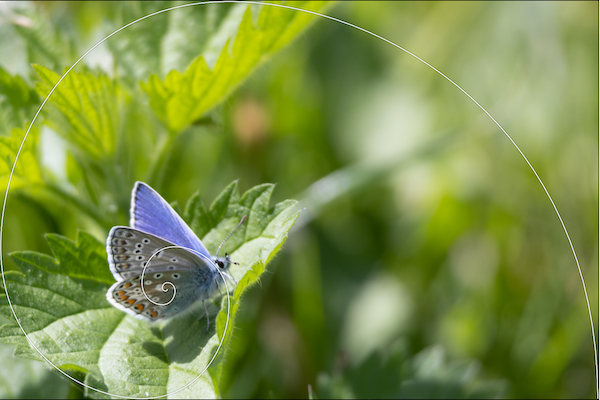 Photo showing the golden ratio method of composition
Photo showing the golden ratio method of compositionPlanning out the values
Before you start drawing, ensure you don't overlook this important step!
Creating a visually-engaging piece involves more than just recreating what you see; it's about guiding the viewer's eye through your artwork through clever use of the dark and light areas.
Thumbnail sketches play a critical role here.
These rough, small-scale layouts help you experiment with value placement, directing focus precisely where you want it.
Avoid poor value distribution that can undermine a stellar drawing, by creating a selection of thumbnails to help you decide on your composition first.
Thoughtfully mapping high-contrast areas leads viewers on a journey from focal point to supporting details. This is essential for turning a simple rendering into a masterful composition.
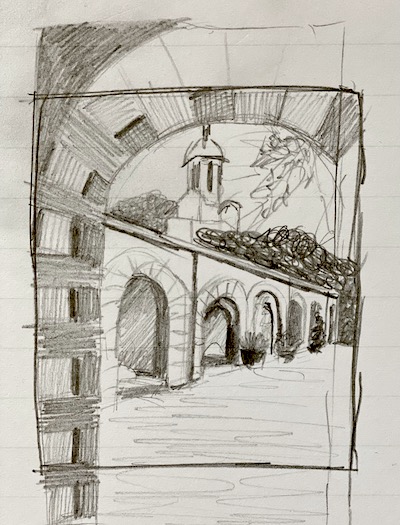
Choosing the best drawing paper
Selecting the best paper for your coloured pencil art is crucial as it significantly impacts the final outcome. With a wide range of options available, from smooth Bristol to textured watercolour paper and from stark white to toned surfaces, choosing the ideal type can be challenging.
This section serves as a guide through the diverse world of drawing papers, covering aspects such as weights, types, sizing, and stretching.
Explore different paper surfaces or "tooth."
Smooth hot press papers are ideal for fine detail and blending, although they can become oversaturated quickly. Rough or cold press papers provide more texture, allowing you to use watercolour pencils. Medium-tooth paper is a versatile choice, especially suitable for beginners.
Equipped with this knowledge, you can confidently select the ideal paper for your coloured pencil artwork.
Getting the outline on the paper
Colored pencil art can be very frustrating when you struggle with the initial outline.
Even when you have a clear image in your mind, transferring it onto paper is challenging.
Whether sketching a portrait, still life, or landscape, inaccuracies early on can disrupt the entire piece, leading to skewed proportions and lost likeness.
Take a deep breath—there are techniques, such as the grid method, to help lay down an accurate outline.
This guide will introduce multiple methods to perfect this crucial first step, allowing you to focus on developing your colour skills and creating something you are proud of.
Which coloured pencils to use
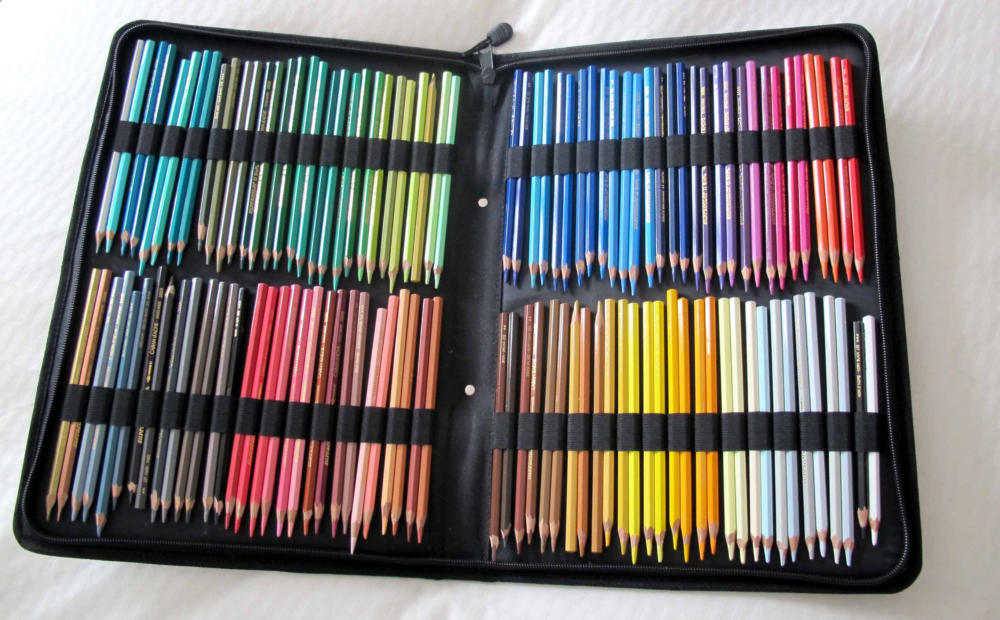 Pencil case filled with Prismacolor pencils
Pencil case filled with Prismacolor pencilsNow it’s time to pick your coloured pencils!
But have you ever found yourself standing in an art supply store, surrounded by pencil brands, types, and colours, feeling utterly overwhelmed?
With countless options – soft or hard cores, wax or oil based, watercolour or pastel pencils – choosing the right tools for your artwork can be a daunting task.
You might prefer soft pencils that smudge together for blending and burnishing, or gravitate towards harder pencils for more precise lines and layering techniques.
You will also want to check on each brands lightfastness to make sure your coloured pencil art doesn’t fade away.
The links will take you to pages that explain each type's strengths and ideal uses.
Colour theory
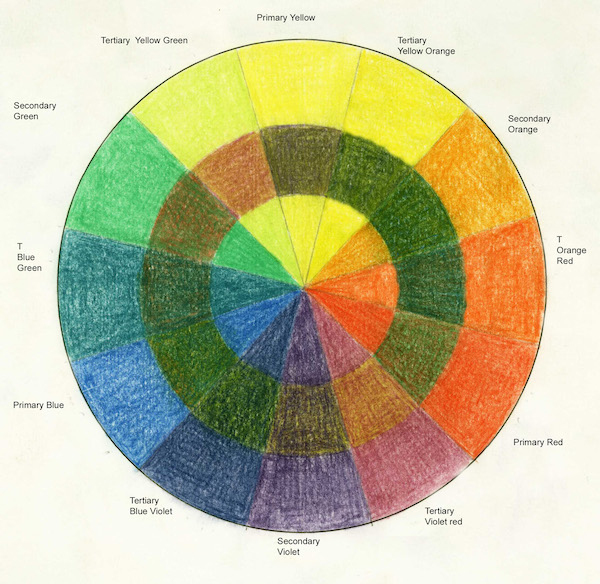 A coloured pencil colour wheel
A coloured pencil colour wheelOne last thing before you begin.
Many artists face the challenge of creating harmonious colour combinations that layer well and bring their artwork to life. The secret lies in understanding colour theory and the colour wheel.
We'll help demystify these concepts, providing you with the essential knowledge to create stunning, layered effects with your coloured pencils.
Eliminate muddy colours and instead create beautiful coloured pencil art with clear, bright hues, shades and tints. Yes we explain those terms too!
You're ready to draw!
Armed with an understanding of these colored pencil basics, you now have the tools to start creating your own stunning art.
Remember, the key to growth and improvement is consistent practice. Enjoy the journey, learn from your mistakes, and don't be afraid to step out of your comfort zone.
With each new piece, you'll gain confidence and develop your unique artistic style. The world of colored pencils is vast and exciting, and the only limit is your imagination. So grab your pencils, let your creativity flow, and enjoy the process of bringing your visions to life on paper.
- Home
- Planning Your Art


